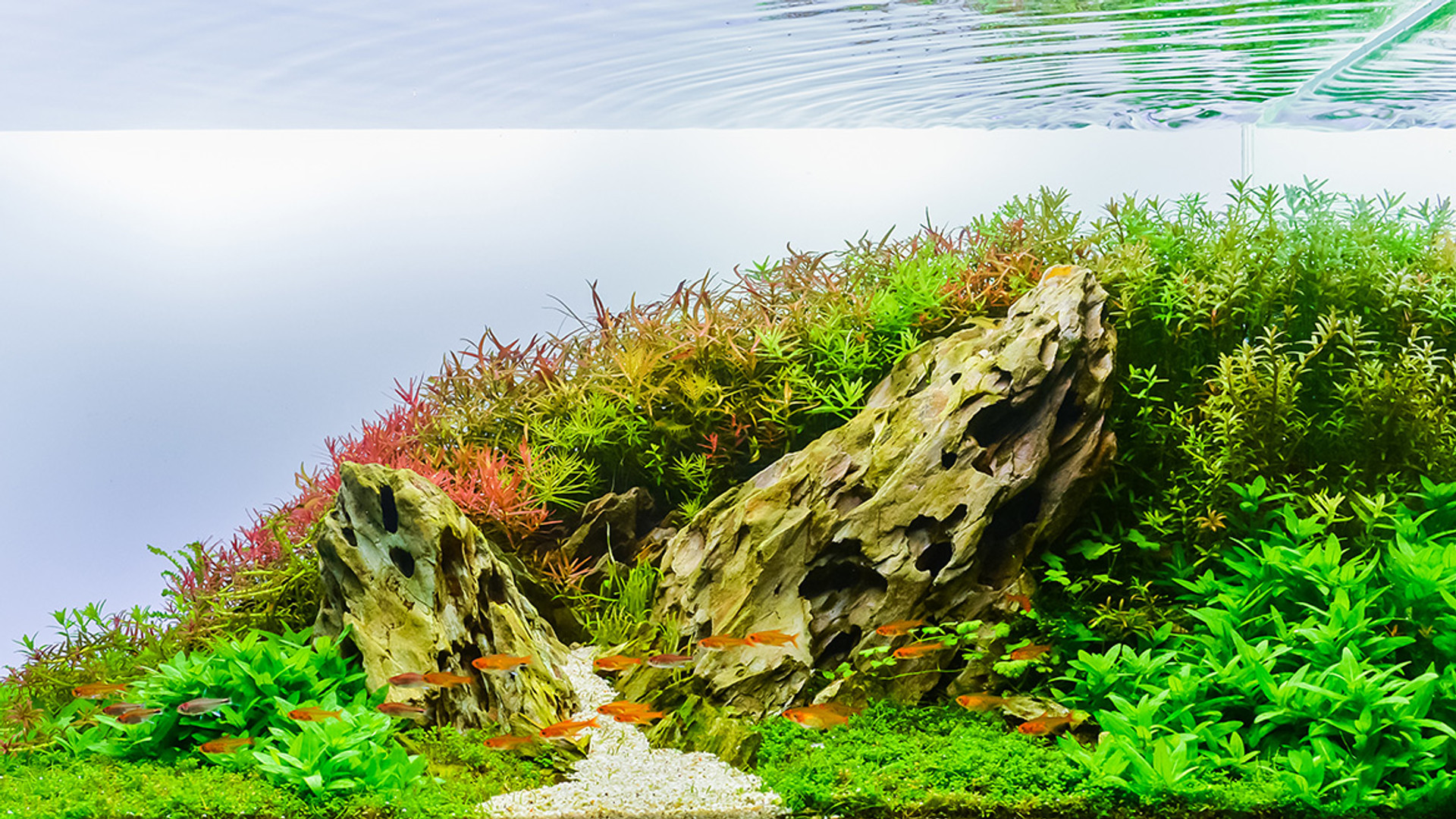The Popularity of Dragon Stone

While lush green backgrounds or dazzling displays of fish and shrimp may be the focal points in planted aquaria, hardscapes are an integral part of the aquascape. One (if not the most) popular is a stone from Japan—you know it as Dragon Stone or Ohko stone locally. This stone derives its name from the shimmery golden-green light it reflects when hit just right by the light. It's simply a stunning display. Dragon Stone is made from mudstone, a relatively light clay in comparison to other commonly used hardscape materials. It's extremely porous, which makes for great hiding and refuge areas, especially for small fish and, in particular shrimp such as the Amano. It's also a great anchor for various plants. It's qualities and inert composition oftentimes make this popular stone challenging to obtain.
Let's go over why its so popular, by looking at its stats.
Traditional Name: Ohko Stone
Common Names: Dragon Stone
Origin: Japan
Habitat: Lakes, ponds & estuaries
Color: Golden-Green-Brown
Density: (g/cm3): 1.85g – 2.5g
Hardness: 2 – 3
pH Impact: Neutral (No Effect)
Elemental Type: Sedimentary Rock (Clay)
One of the most noticeable stats here is that Dragon Stone has no measurable effect on pH, a huge advantage when trying to maintain the oft finicky water chemistry of planted aquariums. This is especially of good note to those using CO2, which has acid that can dissolve lime on other rock and stone negatively effecting both the pH and hardness of your water.
Another advantage of Dragon Stone being lightweight and porous is that it is easily stackable and securable. Many aquarists use this to their advantage to give their aquarium unique Amano or bonsai style looks.
To prepare dragon stone for your aquarium or vivarium, rinse any potential settled dust with a medium pressure hose and allow to air dry.